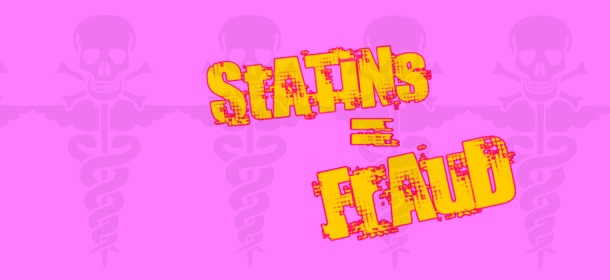Conventional Med
Lobotomy Returns Under a Kinder Gentler New Name
In a new push forward to the dark ages, modern medicine is again claiming to fix mental problems with surgery. There’s little difference between newer surgeries and lobotomies. Both destroy brain tissue. It is, in fact, the goal. Who but a doctor would use the term therapy for brain destruction?
It has just come to my attention that cingulotomies are being pushed in Scotland. It’s a horrifying development—brain mutilation pressed as a benefit for certain “intractable” cases of severe depression, obsessive-compulsive disorder, or whatever magical diagnosis the psychiatrists have opted to select from the latest issue of the Diagnostic and Statistical Manual of Mental Disorders (DSM), which is a selection of invented diagnoses presented as scientific and evidence-based, though none of it passes even the giggle test, let alone any sort of scientific research.
Cingularities? Oh … Cingulotomies.
Destruction of brain tissue is the goal of cingulotomy. It destroys part of the brain and part of who you are. Surgeons play at God and call it “Good”.
The term, cingulotomy, sounds a bit like something from the front lines of quantum physics or astronomy. In psychiatry, though, it’s just an updated lobotomy in a modern friendlier disguise. Instead of using an ice pick and going in through the eye socket—the old-fashioned lobotomy—they’re now far more precise and use much more sophisticated tools. At least, that’s what they’d have us believe. The reality, though, is that the goal is precisely the same: the permanent and utterly irretrievable destruction of a part of the brain—the part that feels emotion.
In writing on this topic over a year ago, I said:
[D]octors never seem to give up their desire to do brain surgery. While they’ve given up using ice picks to destroy brain tissue, they’ve found new methods to accomplish the same thing. Sometimes it’s burned out. Sometimes high-dose radiation is used. Whatever the method, part of the brain is permanently destroyed.
Two varieties of psychosurgery are now done, cingulotomy and capsulotomy. They both involve destroying bits of the limbic system, the part of the brain that handles emotions. It’s also involved with memory, sense of smell, and the endocrine (glandular) system.
Your memory, your sense of smell, and your hormone system are all under the psychiatric surgeon’s knife, cautery iron, and electric diodes. The very nature of who you are is attacked.
No matter what they say, the truth is that there is no way of knowing which parts of you will survive their butchery and which will be gone forever.
Even by their own standards, their “success” rates are dismal. At best, using their own definitions, the success rate is less than 50%—and that doesn’t even mean curtailing the use of psychiatric drugs or other treatments! It’s a bit like an auto mechanic suggesting that your car’s brakes have been repaired, but defining repair as meaning only that the left-side brakes work.
Bad When Chinese Do the Same Thing
It’s interesting to note how the news media deals with latter-day lobotomies. When reporting about Chinese use of cingulotomies, the approach is one of censure, as in this report from The Wall Street Journal:
The irreversible brain surgeries performed at No. 454 Hospital, which are all but blacklisted for mental illness in the developed world, are being done across China. They are a symptom of the problems plaguing the nation’s health-care system, which has left hospitals with scant public funding and hungry for profit.
Notice how it’s pictured in such negative terms implying that nothing of the sort would be done in the west? The fact, though, is that they’re doing exactly the same thing that’s being pushed on people in Scotland … and England and America and the western world in general. Chris Muirhead expresses a different view, and after reading a Medscape report of how success is defined, it becomes quite clear that the promoters’ concept is unlikely to match that of the patients’.
But When American Doctors Do It …
The Medscape report states that 47% of patients with obsessive-compulsive disorder (OCD) had an outcome termed “full response”. That sound like their problems were disappeared along with some bits of their brains.
How did they define “full response”? It was a decrease of 35% in the score on the Yale-Brown Obsessive Compulsive Scale. So, these doctors have determined that someone was fully cured of OCD if they saw an improvement of 35% on one test. That’s all.
So, when American doctors do the new kinder gentler type of lobotomy, the “success” rate is less than half of the subjects improving by a bit more than a third on one test.
Out of 33 patients, the study claims that there were 19 adverse events. That’s more than half of the patients, but the doctors wanted to make sure we understood that none of them suffered from brain hemorrhages. However, I doubt that’s of much comfort to the 12 who suffered from memory problems, urinary retention or incontinence, and abulia (lack of willpower, inability to make decisions). The researchers say that these weren’t permanent effects. There were, though, other problems:
- Three patients suffered from seizures, one of whom required ongoing use of epilepsy drugs.
- One patient had a pulmonary embolus.
- One suffered from a subdural empyema (pus in the brain!) that required a craniotomy, removal of a section of skull, to treat it.
- Two committed suicide.
Without even considering how minimal the benefit was, just how bad must it get before doctors call latter-day lobotomies a failure?
Back to Scotland
The Dundee Advanced Interventions Service provides these wonderful kinder-gentler lobotomies for the Scottish nation and part of England. Their April through March 2012 annual report defines what they do:
The standard definition of Neurosurgery for Mental Disorder (NMD) is that provided by The Royal College of Psychiatrists:
“…a surgical procedure for the destruction of brain tissue for the purposes of alleviating specific mental disorders carried out by a stereotactic or other method capable of making an accurate placement of the lesion” (Royal College of Psychiatrists, 2000)
There you have it! The destruction of brain tissue is the goal of this surgery. So, by definition, they destroy part of the brain, thus destroying part of who you are, and playing at God they call it “Good”.
Of course, they claim that the patients are happy with the results. However, as anyone who’s dealt with the psychiatric system as an incarcerated patient can attest, one of the first things learned is that telling the doctors, nurses, and researchers anything other than what they want to hear is tantamount to asking for more abuse. Of course the patients tell their tormenters how appreciative they are of whatever torment has been meted out.
Difference Between Lobotomies and Cingulotomies/Capsulotomies
Dr. Peter Breggin is a psychiatrist who investigates modern psychiatric treatments and finds them wanting. He describes cingulotomies like this:
Cingulotomy was first performed in 1948 and capsulotomy in 1949 during the first great wave of lobotomy. These surgical interventions interrupt and destroy large bundles of nerve connections in the brain (white matter). These nerve connections include pathways to and from the frontal lobes. As a result, innumerable brains cells (neurons in gray matter) die throughout various portions of the brain. Much of the cell death occurs in the adjacent frontal lobes of the brain — the seat of all higher human functions. This is the scientific definition of lobotomy. The inevitable result is widespread damage to the high mental functions, including judgment, insight, future planning, social awareness, and creativity.
Note that these “new” procedures are old ones that had been discredited as the first form of lobotomy, prior to the advent of Dr. Freeman’s through-the-eye-socket-with-an-icepick style of lobotomy!
Breggin goes on to discuss the case of Kaimowitz v. Michigan Department of Mental Health in 1973, which has never been challenged. He acted as an expert witness in a case of cingulotomy in which the judges declared that the procedure damages the brain, mind, and personality, and is too dangerous for use in state facilities.
He has reviewed five cingulotomy cases performed at Harvard and found:
These individuals lost memory and reasoning functions, were flatted emotionally, and became unable to relate in a caring manner to other people. Four became legally incompetent.
Breggin concludes:
The psychosurgery performed at Harvard and Brown is the same old lobotomy that was rejected by science, medicine, and the public decades ago. Damaging the brain is not a solution to human psychological suffering.
How can psychiatrists and surgeons do this again? We know the results. We know that lives are utterly changed and destroyed, that the person who comes out of such surgeries is not the same one who went in. Part of that person is missing. Nonetheless, these criminals are doing it again, trying to push the same old brain-destroying lobotomies under a new name with a kinder-gentler image that’s nothing but a lie.
Tagged brain mutilation surgery, capsulotomy, cingulotomy, cingulotomy scotland, conventional medicine, lobotomy, lobotomy capsulotomy, lobotomy cingulotomy, modern medicine, psychiatric surgery, psychiatry, psychiatry capsulotomy, psychiatry cingulotomy, psychiatry lobotomy, scotland cingulotomy, scotland psychiatric surgery















Pingback: Lobotomy Returns Under a Kinder Gentler New Name | Health Impact News
Pingback: cascading failure
Pingback: simply click
Pingback: More Information
Pingback: mouse click the following internet site
Pingback: simply click the following post
Pingback: linked internet site
Pingback: mouse click the up coming webpage
Pingback: More Signup bonuses
Pingback: relevant web site
Pingback: simply click the up coming webpage
Pingback: resource for this article
Pingback: This Web site
Pingback: simply click the next internet page
Pingback: simply click the following post
Pingback: please click the up coming post
Pingback: visit the next web site
Pingback: simply click the next web page
Pingback: Read Far more
Pingback: Suggested Web page
Pingback: Suggested Web site
Pingback: This Internet page
Pingback: visit the following website
Pingback: This Webpage
Pingback: Read the Full Posting
Pingback: visit the next post
Pingback: Read More
Pingback: Recommended Internet page
Pingback: Recommended Studying
Pingback: relevant internet site
Pingback: similar internet page
Pingback: simply click
Pingback: simply click the following article
Pingback: simply click the next document
Pingback: source for this article
Pingback: Suggested Looking at
Pingback: This Internet page
Pingback: simply click the up coming website
Pingback: visit the following site
Pingback: visit the following website
Pingback: mouse click the up coming web site
Pingback: please click the next document
Pingback: Suggested Website
Pingback: Click On this page
Pingback: Read Alot more
Pingback: click the next website
Pingback: visit the next post
Pingback: click the up coming website page
Pingback: Read the Full Post
Pingback: click through the next internet site
Pingback: mouse click the following web site
Pingback: Recommended Webpage
Pingback: relevant internet page
Pingback: click through the up coming post
Pingback: please click the following internet page
Pingback: Full Record
Pingback: please click the next site
Pingback: Going On this page
Pingback: source
Pingback: Click This Link
Pingback: just click the next website
Pingback: click through the following web site
Pingback: visit the following page
Pingback: related resource site
Pingback: link
Pingback: click through the next web page
Pingback: relevant site
Pingback: linked web site
Pingback: visit the up coming article
Pingback: similar internet page
Pingback: More Signup bonuses
Pingback: click through the up coming web site
Pingback: click the next internet page
Pingback: simply click the up coming article
Pingback: simply click the up coming website page
Pingback: click the next web page
Pingback: Suggested Internet page
Pingback: supplemental resources
Pingback: click through the following web site
Pingback: Suggested Site
Pingback: click through the next web site
Pingback: This Internet page
Pingback: visit the following web site
Pingback: click through the up coming post
Pingback: visit the up coming internet site
Pingback: helpful resources
Pingback: Continuing
Pingback: Click On this site
Pingback: visit the up coming post
Pingback: Click On this website
Pingback: Full Guide
Pingback: just click the next site
Pingback: click the next page
Pingback: click the following website
Pingback: Going In this article
Pingback: just click the up coming internet site
Pingback: click through the following document
Pingback: Highly recommended Site
Pingback: click through the next internet site
Pingback: linked web site
Pingback: click through the next website page
Pingback: click through the next site
Pingback: Continue Reading
Pingback: more
Pingback: Going In this article
Pingback: More Help
Pingback: Highly recommended Internet page
Pingback: simply click the following page
Pingback: internet site
Pingback: mouse click the following website page
Pingback: just click the next post
Pingback: just click the next web site
Pingback: Suggested Looking at
Pingback: Our site
Pingback: just click the up coming page
Pingback: linked website
Pingback: simply click the next document
Pingback: linked site
Pingback: more
Pingback: More methods
Pingback: relevant internet site
Pingback: resources
Pingback: This Resource site
Pingback: similar web site
Pingback: visit the following page
Pingback: resource for this article
Pingback: simply click the next site
Pingback: simply click the up coming web site
Pingback: Suggested Web site
Pingback: Suggested Website
Pingback: Suggested Internet page
Pingback: This Webpage
Pingback: visit the following internet page
Pingback: visit the following site
Pingback: visit the next web page
Pingback: visit the next web site
Pingback: click for source
Pingback: Click On this website
Pingback: click the following post
Pingback: mouse click the following webpage
Pingback: mouse click the next internet page
Pingback: mouse click the up coming post
Pingback: click through the up coming article
Pingback: Full Article
Pingback: please click the next site
Pingback: Full Post
Pingback: Going In this article
Pingback: Read Alot more
Pingback: Highly recommended Reading
Pingback: please click the next post
Pingback: please click the next website
Pingback: just click the following document
Pingback: Recommended Site
Pingback: Read Even more
Pingback: relevant website
Pingback: More about the author
Pingback: relevant site
Pingback: simply click the following page
Pingback: Read This method
Pingback: simply click the following article
Pingback: Suggested Resource site
Pingback: This Web page
Pingback: relevant internet site
Pingback: visit the following internet page
Pingback: supplemental resources
Pingback: visit the following internet page
Pingback: visit the following website page
Pingback: similar site
Pingback: visit the next website page
Pingback: Check This Out
Pingback: simply click the following website page
Pingback: mouse click the following web page
Pingback: click the next site
Pingback: mouse click the next site
Pingback: please click
Pingback: please click the next document
Pingback: click through the next site
Pingback: click through the up coming page
Pingback: Suggested Website
Pingback: Continuing
Pingback: Full Write-up
Pingback: Recommended Reading
Pingback: related resource site
Pingback: Going On this page
Pingback: visit the up coming document
Pingback: simply click
Pingback: visit the up coming site
Pingback: just click the following post
Pingback: Click Here
Pingback: just click the up coming page
Pingback: Suggested Reading
Pingback: Click In this article
Pingback: click the following internet site
Pingback: Suggested Website
Pingback: This Webpage
Pingback: visit the next site
Pingback: click the following web page
Pingback: visit the up coming post
Pingback: click through the following document
Pingback: click the following post
Pingback: click through the following document
Pingback: simply click the next site
Pingback: click the up coming website
Pingback: click through the next site
Pingback: This Site
Pingback: Clicking Here
Pingback: Full Content
Pingback: visit the up coming internet site
Pingback: Full Review
Pingback: Going to
Pingback: internet site
Pingback: just click the following document
Pingback: Get More Info
Pingback: Going In this article
Pingback: just click the next article
Pingback: just click the up coming web site
Pingback: mouse click the next web page
Pingback: Learn Even more Here
Pingback: Highly recommended Online site
Pingback: More Help
Pingback: resource for this article
Pingback: similar site
Pingback: Read More Here
Pingback: simply click the following page
Pingback: just click for source
Pingback: simply click the up coming document
Pingback: Recommended Browsing
Pingback: Suggested Internet site
Pingback: Recommended Site
Pingback: just click the up coming article
Pingback: Learn Additional
Pingback: This Web site
Pingback: visit the next site
Pingback: visit the up coming internet page
Pingback: similar webpage
Pingback: simply click the following webpage
Pingback: mouse click the up coming document
Pingback: More Bonuses
Pingback: simply click the up coming internet site
Pingback: please click the next website page
Pingback: More Tips
Pingback: This Internet site
Pingback: Read the Full Report
Pingback: visit the following web site
Pingback: similar web site
Pingback: Recommended Website
Pingback: simply click the following page
Pingback: related resource site
Pingback: relevant site
Pingback: simply click the following site
Pingback: Click That Link
Pingback: simply click the following post
Pingback: simply click the next internet page
Pingback: simply click the next document
Pingback: simply click the next site
Pingback: source
Pingback: click the next website
Pingback: sources
Pingback: click through the following web page
Pingback: This Web page
Pingback: visit the next web page
Pingback: visit the following page
Pingback: Full Article
Pingback: This Web site
Pingback: click for source
Pingback: visit the following website
Pingback: Full Post
Pingback: Click That Link
Pingback: visit the next page
Pingback: Highly recommended Resource site
Pingback: click through the next internet site
Pingback: just click the following page
Pingback: click through the next post
Pingback: click through the up coming website
Pingback: just click the next post
Pingback: just click the up coming document
Pingback: Full Report
Pingback: mouse click the following webpage
Pingback: Get the facts
Pingback: Highly recommended Online site
Pingback: mouse click the up coming internet site
Pingback: just click the following document
Pingback: just click the next webpage
Pingback: relevant webpage
Pingback: link
Pingback: Look At This
Pingback: please click the following website
Pingback: simply click the following article
Pingback: please click the next website page
Pingback: simply click the next internet site
Pingback: Read More
Pingback: simply click the up coming site
Pingback: relevant site
Pingback: similar webpage
Pingback: simply click the following page
Pingback: simply click the up coming internet page
Pingback: This Web page
Pingback: simply click the up coming site
Pingback: this website
Pingback: visit the following website page
Pingback: Suggested Browsing
Pingback: visit the up coming post
Pingback: This Web-site
Pingback: mouse click the next document
Pingback: simply click the following internet site
Pingback: mouse click the next web page
Pingback: please click the next post
Pingback: Read Even more
Pingback: Read More
Pingback: Suggested Website
Pingback: Read More On this page
Pingback: visit the following internet page
Pingback: Recommended Web page
Pingback: visit the up coming document
Pingback: mouse click the following post
Pingback: mouse click the up coming article
Pingback: similar website
Pingback: mouse click the up coming website
Pingback: simply click the following post
Pingback: please click the following webpage
Pingback: simply click the up coming article
Pingback: relevant website
Pingback: simply click the up coming website
Pingback: Suggested Browsing
Pingback: Suggested Studying
Pingback: similar web site
Pingback: visit the following site
Pingback: simply click the next website
Pingback: visit the next internet site
Pingback: visit the next page
Pingback: visit the up coming site
Pingback: Check This Out
Pingback: Click Here
Pingback: click the next internet site
Pingback: click the next web site
Pingback: Click This Link
Pingback: Visit
Pingback: click through the following post
Pingback: visit the next document
Pingback: click through the up coming website
Pingback: click through the next website
Pingback: visit the up coming internet site
Pingback: Discover More Here
Pingback: click through the up coming page
Pingback: Full Statement
Pingback: additional reading
Pingback: Going Here
Pingback: Highly recommended Reading
Pingback: Highly recommended Website
Pingback: mouse click the next internet page
Pingback: Read A great deal more
Pingback: helpful resources
Pingback: just click the next web page
Pingback: click the up coming website
Pingback: Recommended Internet page
Pingback: please click the following page
Pingback: click through the following website
Pingback: linked internet page
Pingback: just click the following page
Pingback: please click the up coming document
Pingback: click through the up coming article
Pingback: More Information and facts
Pingback: Read Significantly more
Pingback: click through the up coming post
Pingback: similar internet page
Pingback: Discover More Here
Pingback: Going In this article
Pingback: resource for this article
Pingback: source for this article
Pingback: Highly recommended Internet site
Pingback: simply click the up coming website
Pingback: similar site
Pingback: homepage
Pingback: simply click the following website page
Pingback: just click the following article
Pingback: simply click the up coming post
Pingback: visit the following page
Pingback: Learn Alot more
Pingback: Suggested Webpage
Pingback: This Web site
Pingback: mouse click the following article
Pingback: visit the following webpage
Pingback: relevant web site
Pingback: similar website
Pingback: click the up coming document
Pingback: simply click the following post
Pingback: click through the following web site
Pingback: click through the next webpage
Pingback: source
Pingback: Full Survey
Pingback: visit the following post
Pingback: helpful hints
Pingback: visit the following web page
Pingback: Highly recommended Web-site
Pingback: visit the up coming internet site
Pingback: just click the next webpage
Pingback: Learn Even more Here
Pingback: linked webpage
Pingback: More hints
Pingback: mouse click the following article
Pingback: similar webpage
Pingback: simply click the following internet page
Pingback: simply click the next site
Pingback: source for this article
Pingback: Suggested Internet page
Pingback: This Resource site
Pingback: Visit
Pingback: visit the following web site
Pingback: visit the up coming post